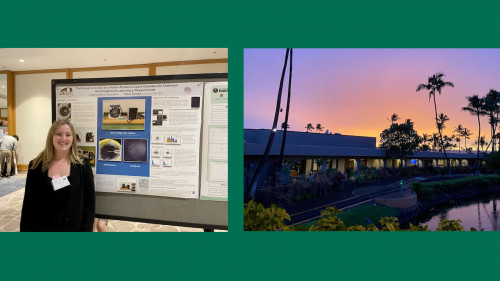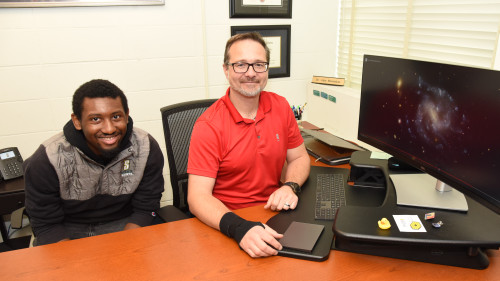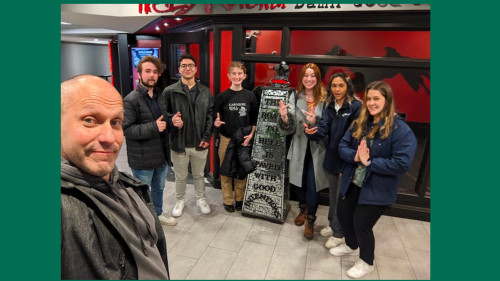
To get a good look at our nearest galaxy cluster, Dr. Rose Finn, professor of physics, and Kristina Gatto '23 traveled to the Canary Islands, a cluster of seven main islands off the coast of Morocco.
Finn and Gatto weren't simply stargazing, they were star mapping - from perhaps the best location for optic and infrared astronomy in the world. Perched more than 8,000 feet above the Atlantic sits the Roque de los Muchachos Observatory. It's higher than the cloud deck, and offers clear site to the Virgo Cluster – a constellation of more than 1,300 galaxies some 65-million light years away.
Siena's astronomers were finishing an imaging survey that took five years to complete. The project is part of a larger international effort known as the Virgo Filament Survey, which depended on collaboration from astronomers in the U.S., Italy, Switzerland, and France. They studied the gas and star-formation of galaxies that reside in filaments (the largest structures in the Universe) to determine how these web-like structures affect the evolution of member galaxies. Over the course of five years, they obtained maps of where new stars are forming in a sample of over 500 galaxies in the Virgo Cluster.
"We've had multiple delays due to poor weather, instrument failures, and COVID that put us about two to three years behind schedule. So finishing the imaging survey after five years was an amazing feeling."
Rose Finn, Ph.D., professor of physics
Finn's involvement has been possible through a grant from the National Science Foundation. Gatto's expenses were covered by CURCA (with gratitude from Finn and Gatto). As part of the imaging survey, Finn traveled to the Canary Islands in February of 2019. She was accompanied by Kim Conger '20 and James Agostino '20. Conger is now a Ph.D. student at the University of Kansas and is working on another piece of the Virgo Filament Survey; Agostino is now a Ph.D. student at the University of Toledo.
"I'm so grateful to have been a part of this project and have the chance to operate this incredible telescope as a visiting astronomer. As a bonus, I got to see such a beautiful place and hike on top of a mountain range! I'm also super grateful Dr. Finn asked me to join her on this trip because it gave me the opportunity to see what professional astronomers get to do, and overall it was the coolest experience!!"
Kristina Gatto '23
"The setting defies description. The observatory borders a national park and sits on the edge of a caldera. The vistas are absolutely breathtaking."
Rose Finn, Ph.D., professor of physics

